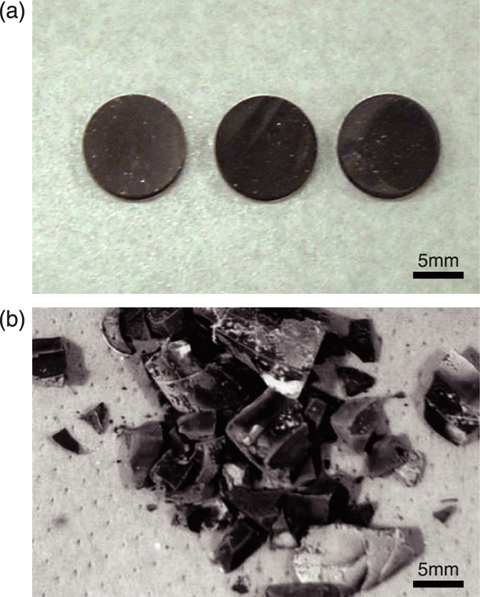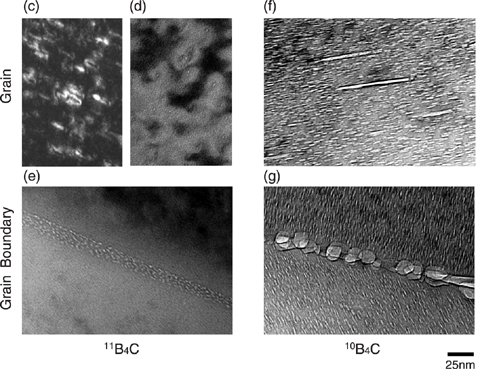
Fig.14-14 Appearance of (a) Irradiated 11B4C and (b) 10B4C at around 500°C

Fig.14-15 Microstructure of irradiated 11B4C and 10B4C
It is difficult to store high level waste that contains long-lived fission products (LLFP). Transmutation of LLFP, which changes them into short lived or stable nuclides, is a solution. Thermal reactors are efficient for LLFP transmutation, but fast reactors also have possibilities for it by modifying a fast neutron into a thermal neutron. 11B4C was fabricated from concentrating 11B in natural boron carbide. Both hydride and 11B4C are candidates to be moderators. It is possible to raise the efficiency by loading LLFP as a target with the moderator, in order to transmute LLFP in the fast reactor. The slow-down power of 11B4C is lower than hydride. 11B4C has an advantage in the thermal design, because the boron carbide has been stabilized to the melting point chemically, while the hydride dissociates the hydrogen when it reaches a high temperature.
Hydride and 11B4C were irradiated in Phenix, a fast reactor in France. We have many irradiation experiences with 10B4C as an absorber material. 10B4C was fabricated from concentrating 10B. He was produced by a 10B (n,α) 7Li reaction. A B4C pellet was sintered for irradiation. The He stored in it and changed into He bubbles. These bubbles caused the pellets to crack, which is a bad effect for materials stability. The volume of He generated in 11B4C was expected to be about 1/100 in comparison with that in 10B4C.
In this study, 11B4C was irradiated at 530°C to 1.9×1026 n/m2 (E>0.1 MeV), and 10B4C was irradiated at 800-900°C to 3.1×1026 n/m2 (E>0.1 MeV). Afterwards, a post irradiation experiment was performed. The 10B4C pellet was difficult to be divided around 700-800°C. Then, the 11B4C was specially irradiated at 530°C. The irradiated sample became very brittle. Therefore, a test piece of irradiated 11B4C was prepared by ion-milling method in full detail.
In Fig.14-14, the appearance of 11B4C and 11B4C after irradiation is shown. In Fig.14-15, the microstructure of 11B4C and 10B4C after irradiation is shown. In the 11B4C grain, large bubbles of a high-density were observed compared to 10B4C. In the grain boundary, additional large bubbles were observed in the grain. It was considered that in the 11B4C, the growth of the bubble was slow, and the nucleation frequency is also low. From the observation results, it was confirmed that 11B4C was stable under the moderator service conditions. In the future, a more detailed microstructure observation will be performed.